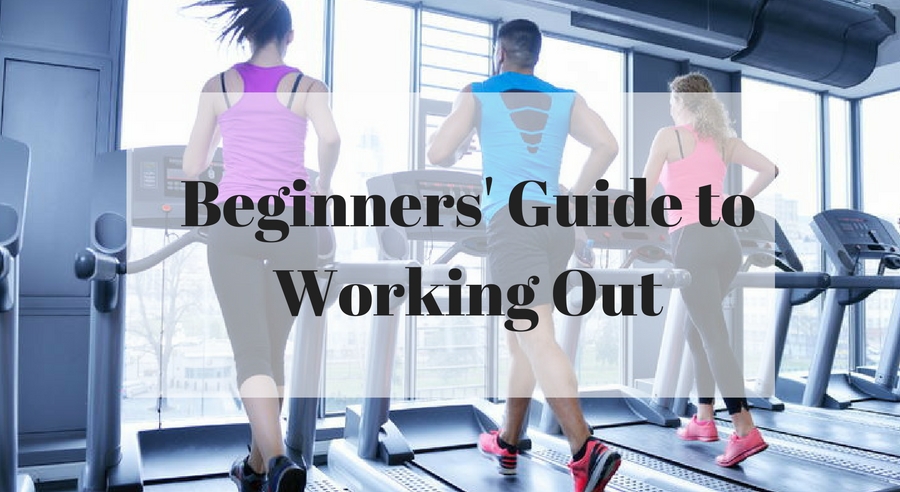If you’ve ever wondered:
“Do I need a gym membership?”
“What exercises should I be doing?”
“What body parts should I be training when I go to the gym?”
“How many reps should I be doing?”
These are all questions that beginners are asking themselves when they have decided to get into shape.
As a beginner it’s MUCH easier than you think, and it works.
|
Quick Summary: If you are a beginner looking to start working out, getting a gym membership is a good start. As a beginner it is important to include both cardiovascular and resistance training into your workout plan, but most of the time should be spent doing resistance training. Each day can be spent training the whole body, or the body can be broken down into multiple days (2-4). Each workout should begin with a warm up, then proceeded with resistance training, and finished with cardiovascular training and stretching. Free weight exercises, should be performed before exercises with machines and beginners should aim for performing 12-15 reps each set for a total of 1-3 sets for each exercise.
|
I Just Started Working Out, Do I Need a Gym Membership?
Many are reluctant about going to the gym because they feel that it is an intimidating environment, which some gyms may be, so they rather do their workouts at home.
Whereas others really like using the gym as an excuse to get out of the house and socialize.
There is really no right answer here, it is a matter of preference.
But you cannot deny the fact that you have access to a much larger variety of equipment to work with at a gym (unless you can afford some equipment, which can be a fortune!).
Do I Need a 1 On 1 Personal Trainer?
If you sign up for a gym membership you are definitely going to be approached by the sales team to purchase 1-1 personal training sessions, which may be unnecessary for your fitness level at that point.
Are they necessary? Probably not.
- If you are looking for someone to teach you, you can easily learn from home with a online personal trainer and pay much less. (Learn more about us)
- If you are looking for someone to teach you and cheer you on and don’t mind the price, then 1-1 personal training might be a good fit.
But with average costs of at least $70-80 per hour for a personal trainer, which can be expensive in the long run for many.
Workout Plans for Beginners
Looking at the overall layout of a gym you can see that they are usually divided into 2 sections.
- The cardiovascular exercise machines like the elliptical, treadmill, stationary bike, and stair climber.
- Next is the section for resistance training which is usually divided into machines, free-weights (dumbbells and barbells), and the plate-loaded machines.
To get the best results, most of your time should be spent doing resistance training exercises because they provide the greatest benefits if performed correctly including providing benefits to the cardiovascular system.
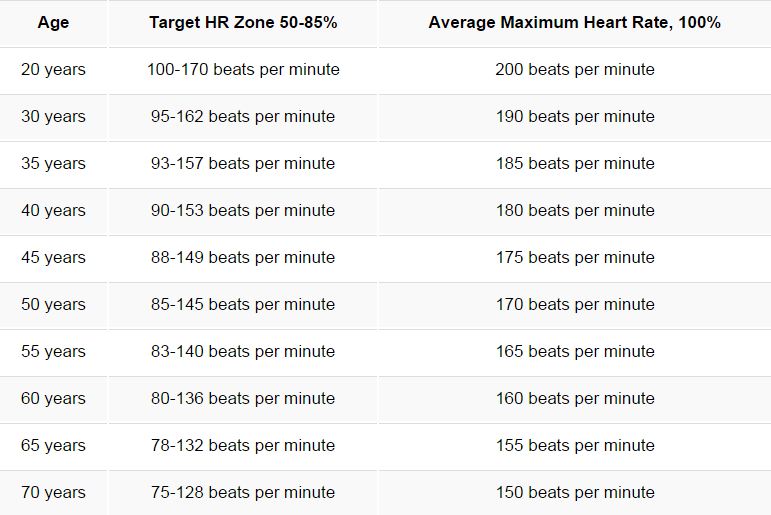
In fact, there are so many exercises that can be done at the gym that may be overwhelming.
This is why it may be beneficial to break down your body into 2-4 different workouts on different days.
For example, you can do your upper body on one day and your lower body on another…
…furthermore, you can then divide further and break down your upper body workout to two separate workouts:
- One day you can perform push exercises, which include exercises for the chest, shoulders, and triceps.
- On the other day you can perform pull exercises, which include exercises for back and biceps.
It’s that simple
Generally speaking, beginners start with a 1 or 2 day plan and progressively break down their workouts to separate days.
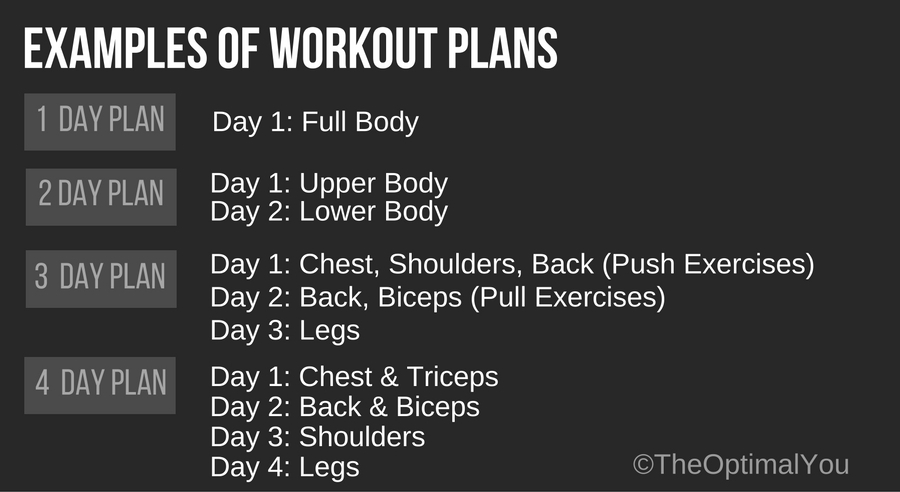
Below are several different ways you can split up your workouts:
1 Day Plan: Full Body
2 Day Plan: Upper Body & Lower Body
3 Day Plan: Push Exercises (Chest, Shoulder, Back), Pull Exercises (Back, Biceps), & Legs
4 Day Plan: Chest & Triceps, Back & Biceps, Shoulders, & Legs
The Structure of a Workout for Beginners
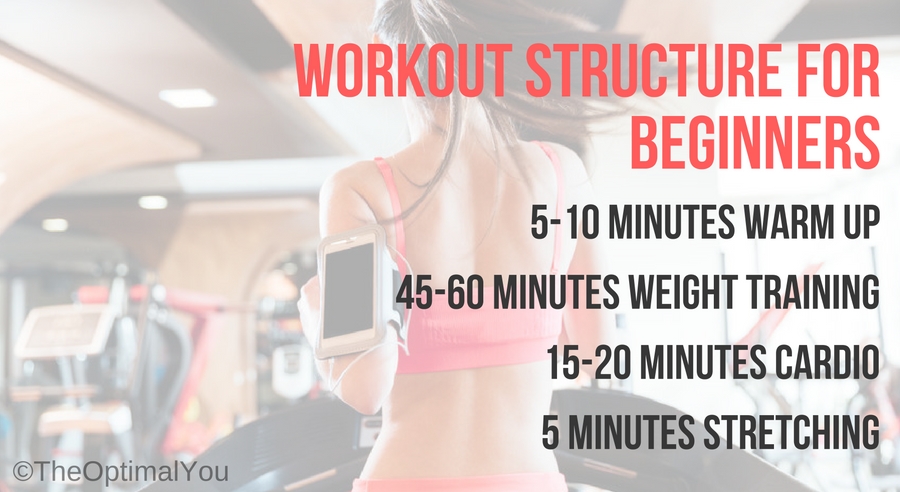
Here is a basic structure for a workout for beginners:
1) 5-10 minutes warm up (Note: stretching is important, do not skip this step)
2) 45-60 minutes resistance training (weights)
3) 15-20 minutes cardiovascular training
4) 5 minutes stretching (There are many benefits to stretching after a workout)
You want to start your workout by doing a 5-10 minute warm up.
This is often done on a: treadmill, elliptical, Stairmaster, or stationary bike.
Keep the intensity low…
…because the goal here is to get the body ready for the workout by warming it up.
You can also incorporate dynamic stretching at the beginning of your workout:
Dynamic stretching involves moving the body part in order to get a stretch, compared to a static stretch, where you hold the muscle in the lengthened stage.
Resistance training is the next part of the beginners workout; begin by warming up the muscle group you are targeting that day by starting with an easy exercise, usually a machine or cables. For example, if you are training back, you should warm up by doing 2-3 sets of cable pulldowns.
Or if you are doing legs, you could warm up by doing 2-3 sets of leg extensions.
The goal here is to: warm up the body part you will be training so be sure to pick a weight that is not challenging.
Save your energy for the next exercise when your body is warmed up and ready.
Which leads me to our next tip…
After the warm up exercise with the machines or cables, exercises are usually ordered from most difficult to least difficult, mostly because you have the most energy at the start of your workout.
Another way to look at it is: start off with the bigger muscles and progress to the smaller muscle groups.
Here is an example beginner 2-day workout plan:
(Notice how the workouts start with the larger muscles (quads, chest, back) and progresses to the smaller muscles (calves, arms).
Day 1: Quads, Hamstrings, Calves, & Cardio
Day 2: Chest, Back, Shoulders & Arms
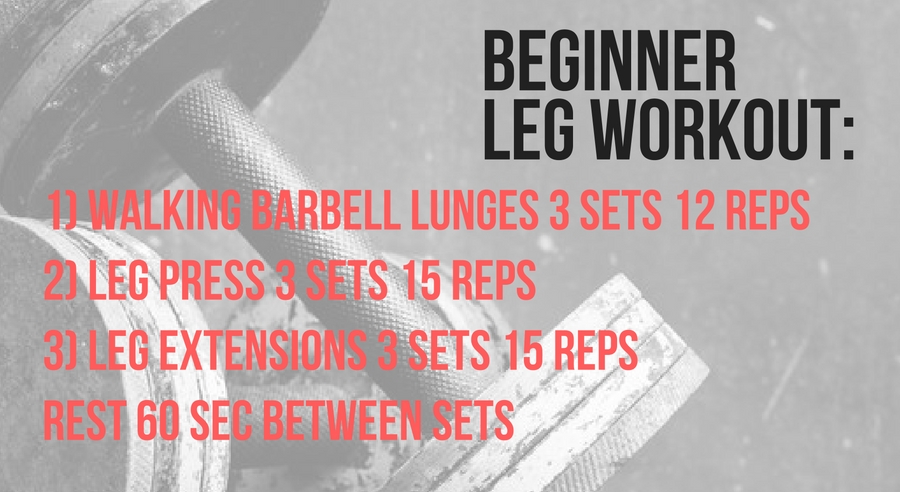
Another good pattern to keep in mind when you are planning which exercises to do is to perform the free weight exercises with dumbbells and barbell first and then move onto exercises that involve cables or machines.
Free weight exercises are generally more difficult and require the help of the stabilizer muscles (so you want to do them at the beginning of the workout while they are fresh).
For instance, once you are warmed up you can do exercises like barbell rows and deadlifts (free weight exercises) and moving towards cable pulldowns and cable/machine rows towards the end of the workout.
Number of Sets and Repetitions for a Beginner
Generally speaking, as a beginner you want to aim for 12-15 reps each set and perform anywhere from 1-3 sets for each exercise. (To build muscle faster, read our post here)
This means that you should adjust your weight accordingly to reach failure within that specific rep range.
What this means is…
…you should not be able to get more than 15 reps with the weight you have chosen, if you can you need to increase your weight.
If you cannot reach 12 reps, then you need to DECREASE your weight.
Here is a list of an example of a beginner workout.
Pay attention to the order of exercises as they progress from free weight to machines and cables and to the number of reps.
Beginner Leg Workout:
1) Walking Barbell Lunges 3 sets 12 reps (each leg)
2) Leg Press 3 sets 15 reps
3) Leg Extension 15 reps
|
Quick Summary: If you are a beginner looking to start working out, getting a gym membership is a good start. As a beginner it is important to include both cardiovascular and resistance training into your workout plan, but most of the time should be spent doing resistance training. Each day can be spent training the whole body, or the body can be broken down into multiple days (2-4). Each workout should begin with a warm up, then proceeded with resistance training, and finished with cardiovascular training and stretching. Free weight exercises, should be performed before exercises with machines and beginners should aim for performing 12-15 reps each set for a total of 1-3 sets for each exercise.
|
At The Optimal You we have created an online personal training resource that is affordable for all. If you want to learn more how you can get a customized plan for you and your fitness goals contact us today at inquiries@the-optimal-you.com.

